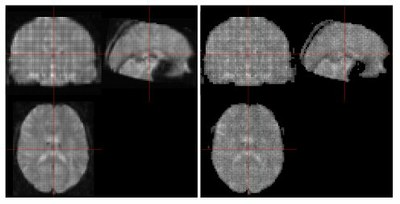Using neuRosim to simulate magnitude fMRI data containing physiological noise
Marijke Welvaert (Department of Data Analysis), Yves Rosseel (Department of Data Analysis)
Functional magnetic resonance imaging is used as a powerful tool to locate BOLD activation in time and especially in place. Unfortunately, the ground truth of the data acquired using fMRI is unknown and therefore, the data are not considered to be useful for validation studies. As a solution, fMRI data are generated arteficially. However, there is currently no consensus on how to simulate fMRI data. By and large, simulation studies are conducted using ad-hoc methods and in-house software routines.
neuRosim is an R package (http://www.r-project.org) that aims to serve as a general standardised software platform to simulate fMRI data. Currently, the package is restricted to generating pre-processed magnitude fMRI data and the main focus lies on the inclusion of several noise sources (for example, system noise, temporally and spatially correlated noise, physiological noise, ...).
neuRosim can be downloaded from CRAN (http://cran.r-project.org) and is released with a GPL licence, meaning that it is completely open-source and can be freely used under almost all platforms (Windows, Mac and Unix). The data generation in neuRosim is fairly fast and, depending on the dimensions of the dataset, can be easily computed on a standard desktop within a few minutes.
During the presentation, we will demonstrate the functionalities of the package using a real-life example. Based on the face dataset (Henson et al., 2002), we will show how to simulate an fMRI dataset for a 2x2 factorial event-related fMRI and how to modulate the parameters of the simulation. Figure 1 presents a comparison of the real data (left) and example data generated using neuRosim (right). Further, we will discuss the options that are included in the package to conduct large-scale simulation studies.
References
Henson, R.N.A., Shallice, T., Gorno-Tempini, M.-L. and Dolan, R.J. (2002) Face repetition effects in implicit and explicit memory tests as measured by fMRI. Cerebral Cortex, 12, 178-186.


 Latest news for Neuroinformatics 2011
Latest news for Neuroinformatics 2011 Follow INCF on Twitter
Follow INCF on Twitter
